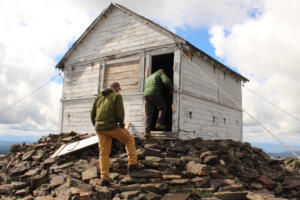By Molly Coston, David Ripp and David Pinkernell, Guest Columnists
Over the past four years, a unique partnership has formed in our community. This unlikely mix of bedfellows has developed the Steigerwald Floodplain Restoration Project — a project that will realign our levee system to simultaneously benefit our industrial, tourism and land-development economies, while improving the environment.
But, we need the state legislature to fund their Floodplains by Design program to make this a reality.
A bit of background: The Corps of Engineers completed our existing 5.5-mile levee system in 1966. It has protected us from Columbia River floods, but development in the area and a poorly designed water control structure have created flood problems along Gibbons Creek, particularly for residences, the Port’s industrial park, state Route 14, and the city of Washougal’s wastewater treatment plant. Some of these areas flooded in 1996. The Port spends more than $100,000 annually on flood management, and the failed Gibbons Creek water control structure needs repairs likely to cost several million dollars. Put simply, the 50-year-old system isn’t addressing today’s problems. We need to reconnect Gibbons Creek to the Columbia River.
The Port, city, Lower Columbia Estuary Partnership, U.S. Fish and Wildlife Service (USFWS), Bonneville Power Administration (BPA), Washington State Department of Transportation (WSDOT), Friends of the Columbia Gorge, Burlington Northern Santa Fe (BNSF) Railroad, and several private landowners have developed a solution: the Steigerwald Floodplain Restoration Project. This project will reconfigure our levee system to reconnect Gibbons Creek and the Columbia River to 960 acres of floodplain, thus restoring important habitat for salmon and lamprey and reducing flood risk and flood management costs. The project also will add one mile of new trail to the refuge, which is visited by 80,000 people annually, and bring 3,000 elementary and middle school students to the refuge to plant trees. The refuge’s improved trail system eventually will connect to our waterfront park and downtown, creating a unique regional model for linking urban and wildlife areas. While we are just starting to realize the long-term benefits of this vision to our tourism and recreation economies, there is no doubt the hundreds of family wage jobs created during construction of the $21 million Steigerwald Project will provide a boost to our local economy.
During his visit to the project site, Gov. Jay Inslee noted that the Steigerwald Project is good for both juvenile humans and juvenile salmon. He is absolutely correct, and in recognition of this, BPA and USFWS have invested in the project. Yet, the state legislature has not passed a capital budget, which is required to fund its Floodplains by Design program. Our $4.6 million request to that program would fund about one-fifth of the Steigerwald Project’s total cost, helping to secure the remaining $16 million. The Floodplains by Design program has never funded a project in Clark County; it is time they receive the support they need from the legislature to do so.

